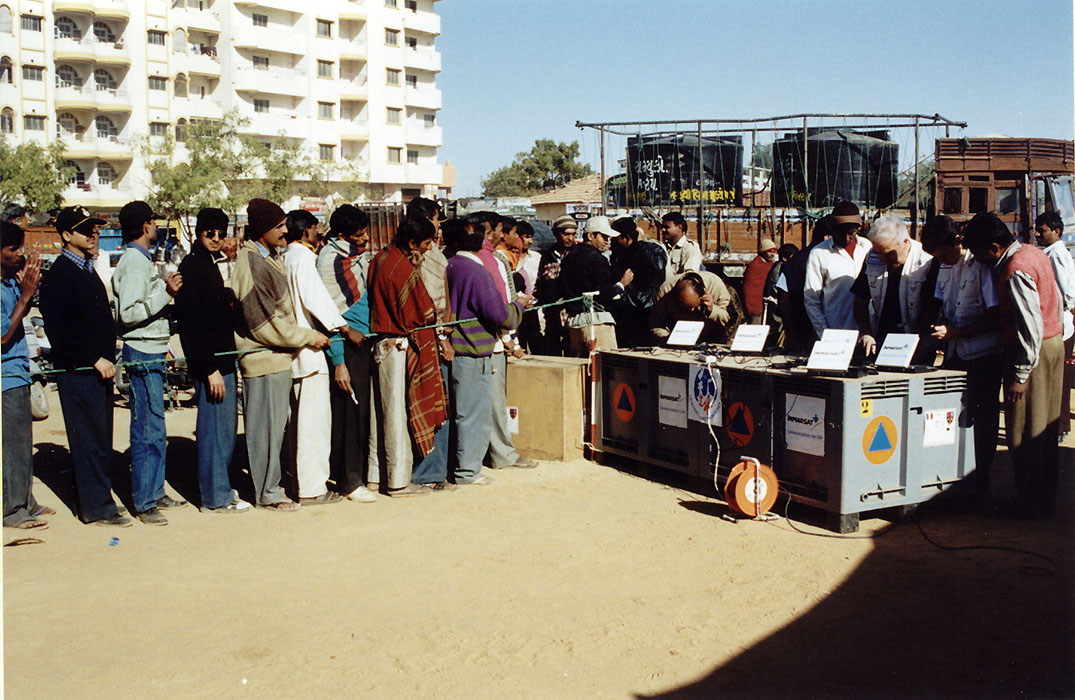Bhuj Earthquake - Province of Gujarat
Context: Earthquake
Start date: 27/01/2001
End ate: 06/02/2001
Areas of intervention: City of Bhuj, Province of Gujarat
Activities:
- Humanitarian calling operations
- Support to coordination
19 500 calls offered
Context
On 26th January 2001, an earthquake measuring 7.9 on the Richter scale hit the province of Gujarat in north-western India, one of the country’s most prosperous states. The epicentre was located near the town of Bhuj, officially killing 16,927 people and injuring 166,836. Buildings and infrastructure were destroyed or heavily damaged. The telecommunications situation was catastrophic; the Bhuj region was totally isolated from the rest of the country and the rest of the world.
Deployment
On 25th January 2001, a team from Télécoms Sans Frontières was returning from El Salvador where an earthquake had destroyed part of the country. 48 hours later, the team was flying to India, a country that suffered the same fate.
The goal was to reach Bhuj, city of 200,000 inhabitants about fifteen kilometres from the epicentre. Between these two cities, everything was in ruins and the population was in shock. Throughout the course of the 36-hour journey, hundreds of telephone calls were offered by TSF to all those affected.
Humanitarian calling operations
On 30th January, TSF immediately deployed its 13 satellite phones in Bhuj to the benefit of the affected population. Installed close to the various rescue centres, two teams were mobilised 14 hours a day to offer humanitarian calls to local people who would spend hours waiting. Thousands of calls were made, mainly to England and Dubai, but also to other parts of India.
TSF identified the vital need for populations to communicate. Thousands of people came to the TSF call centres, holding a crumpled piece of paper with the number of a family member or relative. These calls allowed them to ask for help and regain a certain degree of hope. A total of 19,500 calls were made via satellite to the benefit of Indian civilians and relief agencies alike.
Support to coordination
In addition, TSF provided satellite equipment to the humanitarian organisations in charge of coordinating the rescue teams and to the international firefighters involved in the search. This valuable assistance enabled them to send their daily reports and coordinate their life-saving operations.









